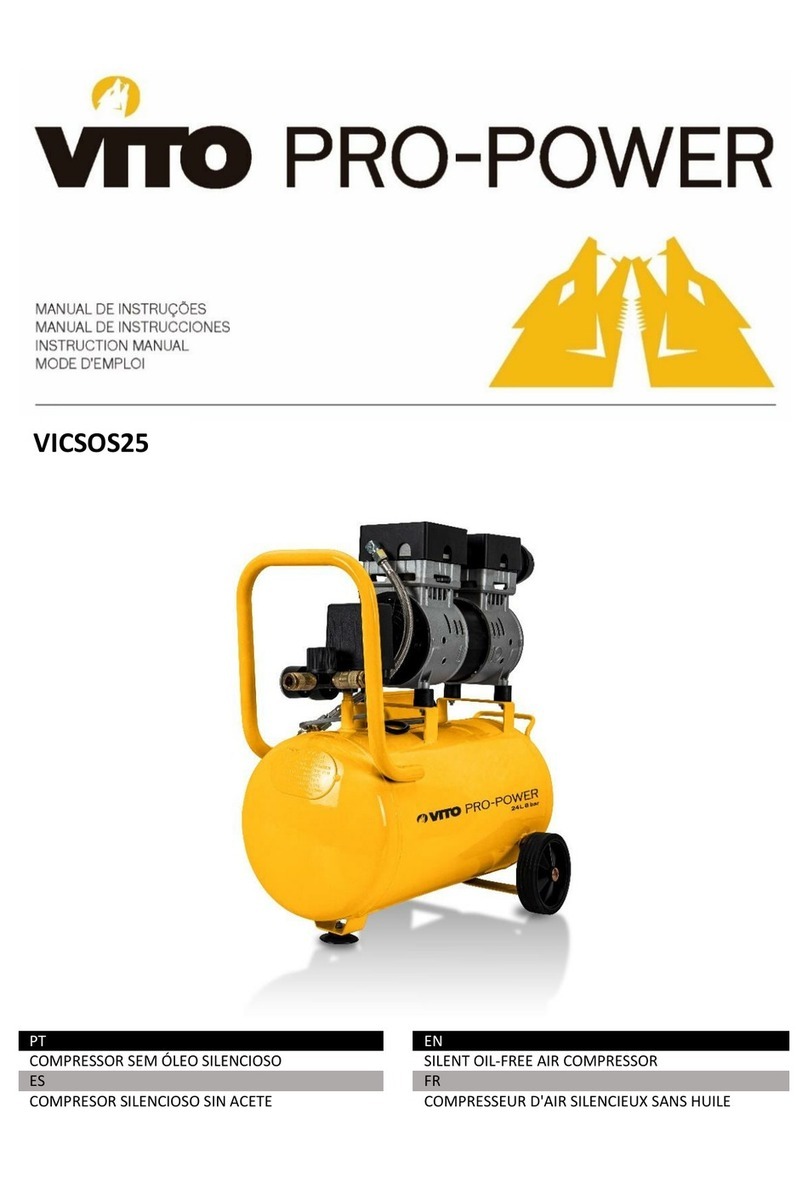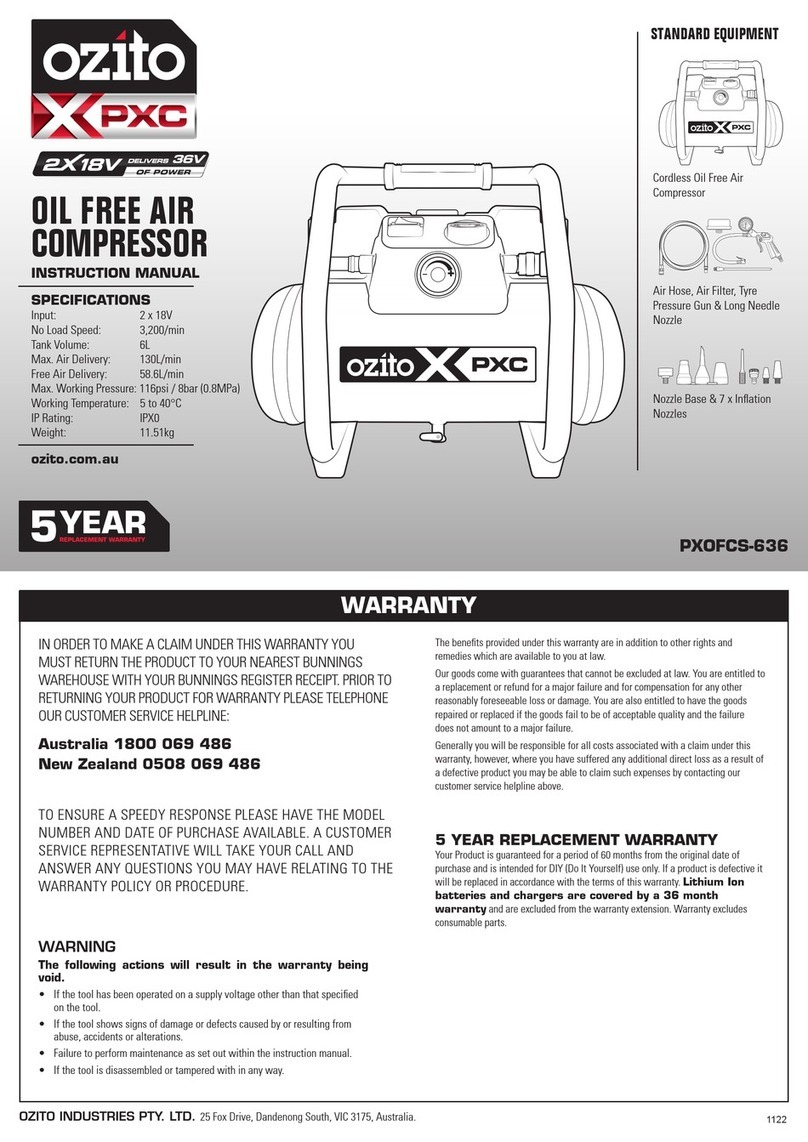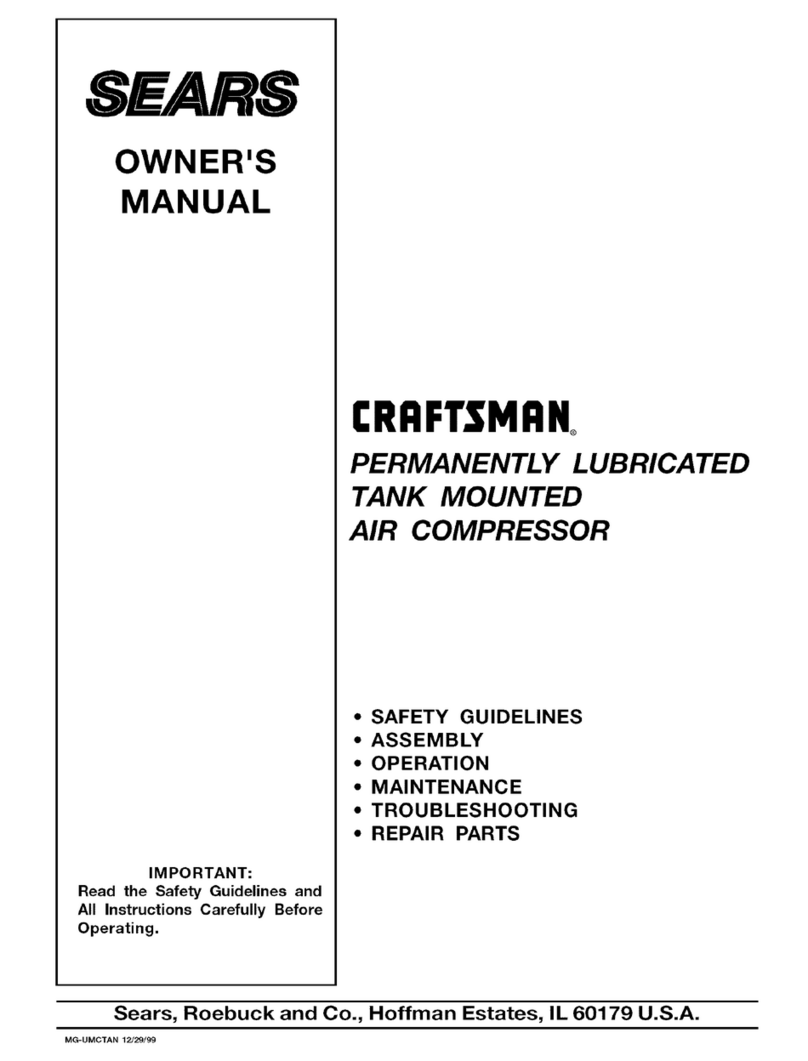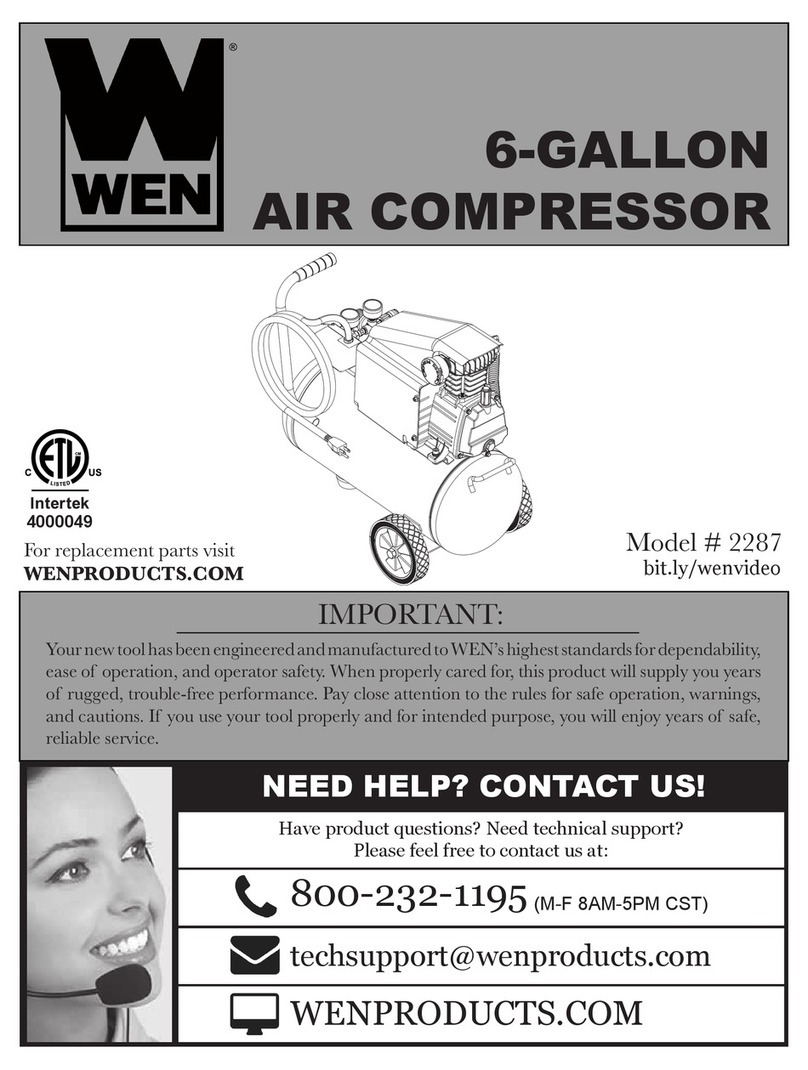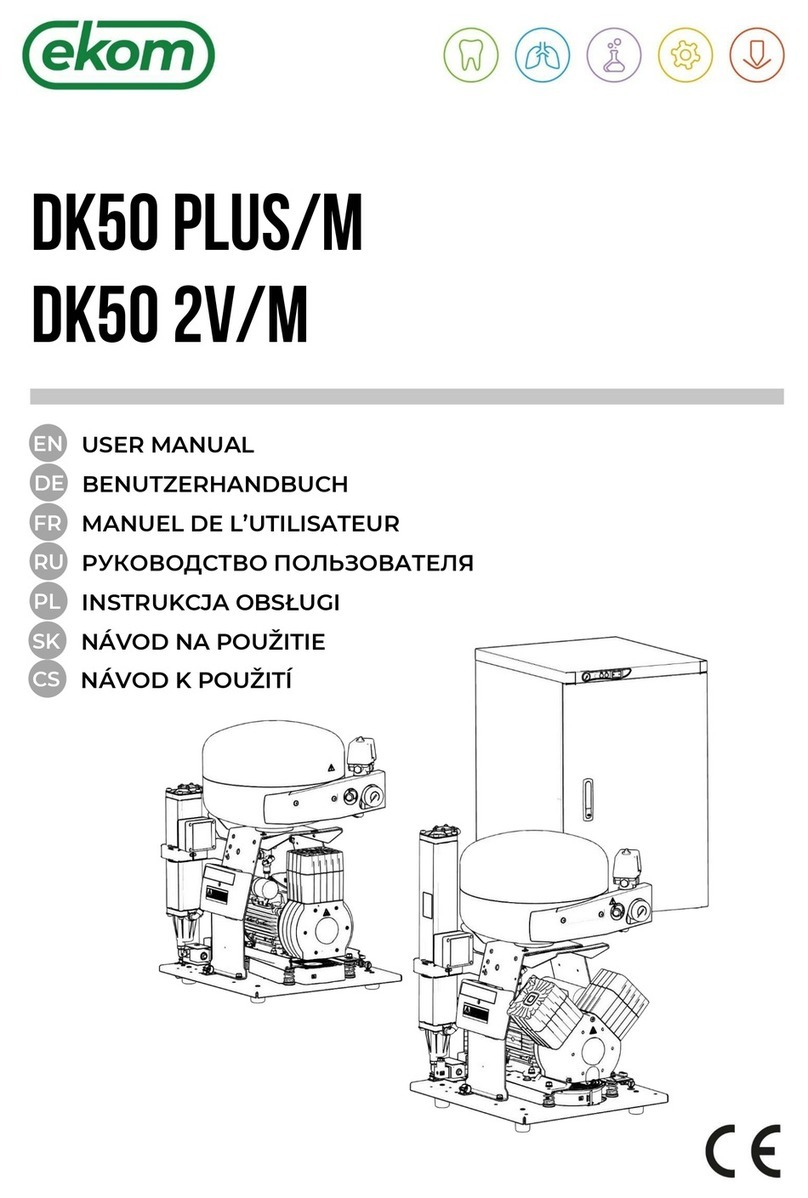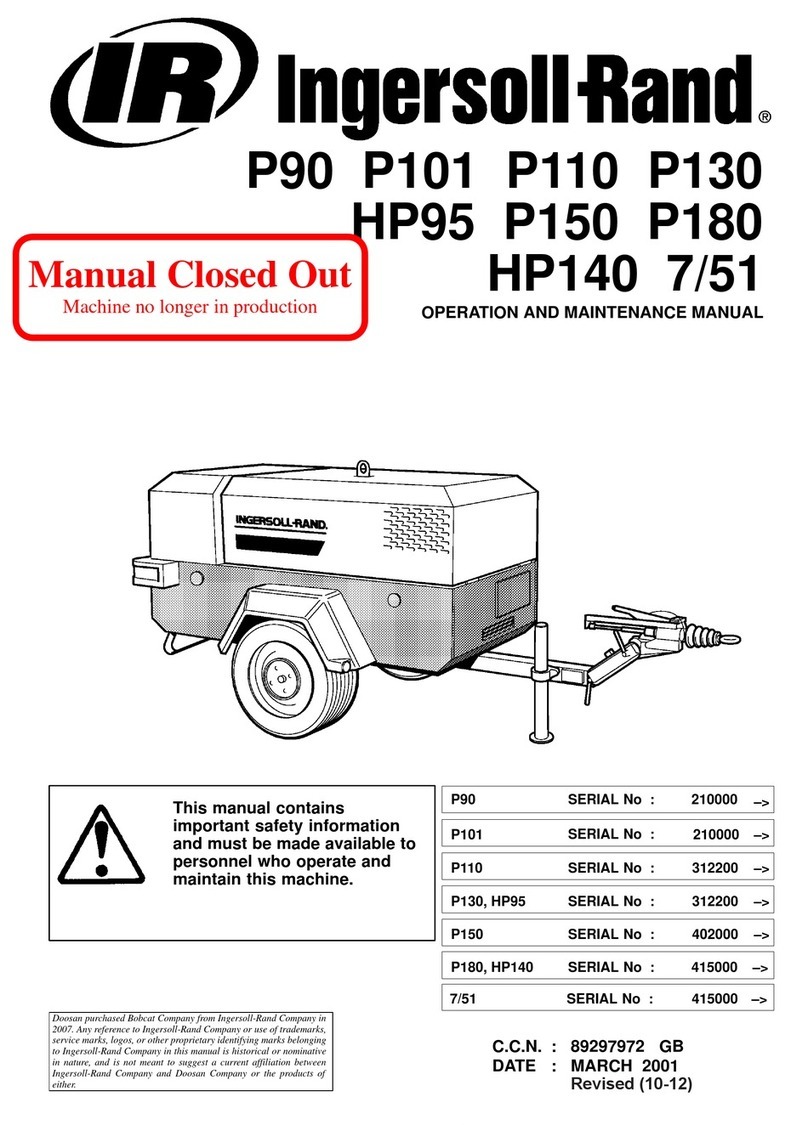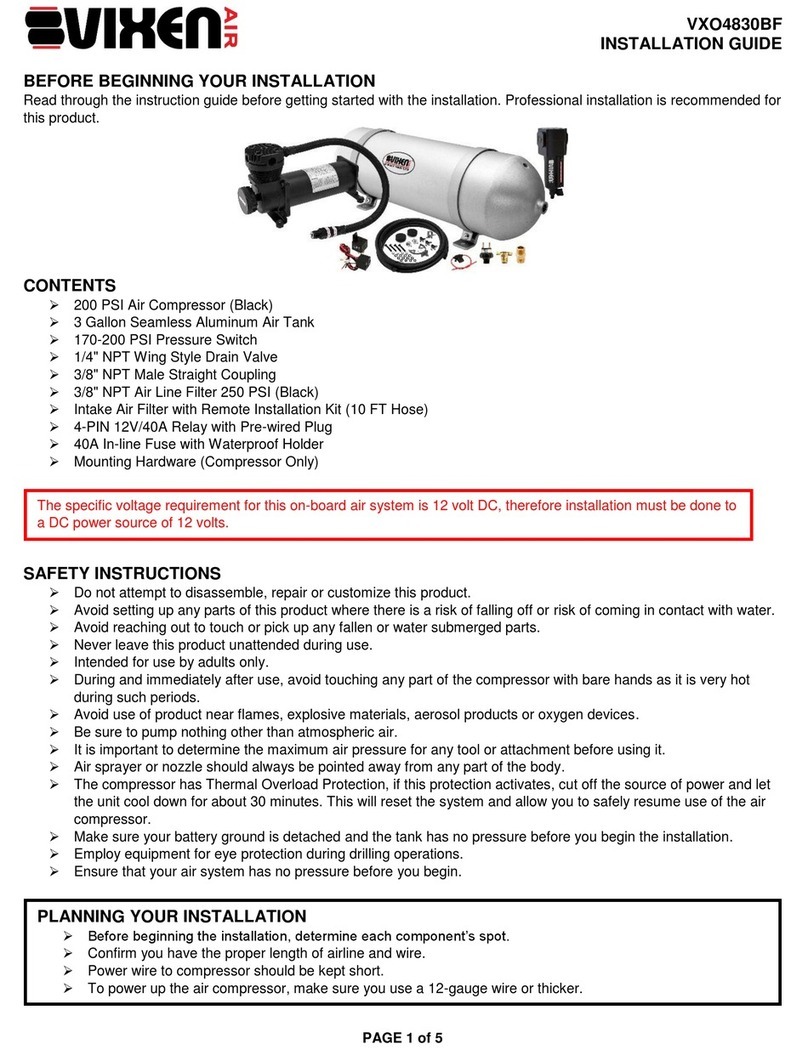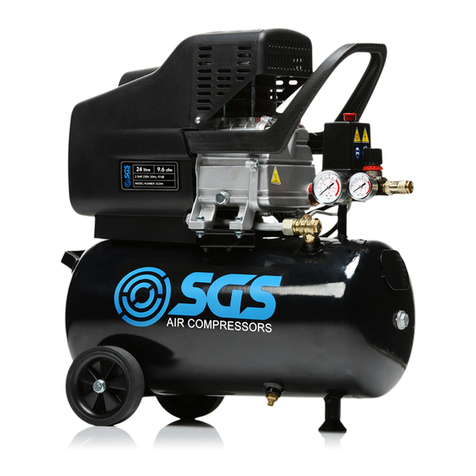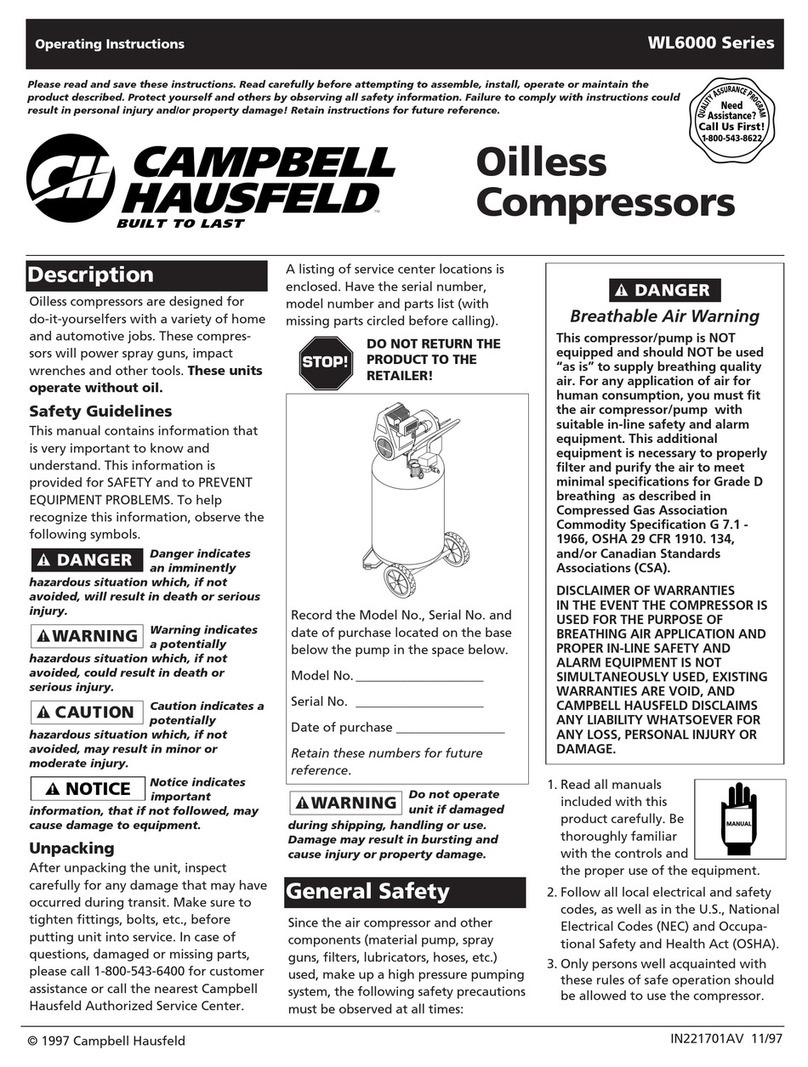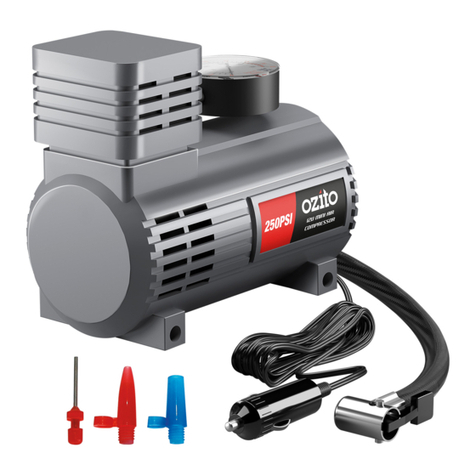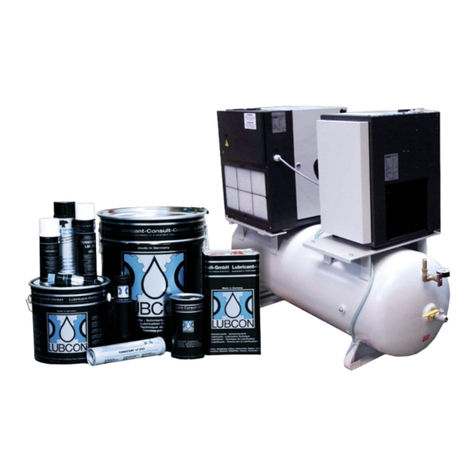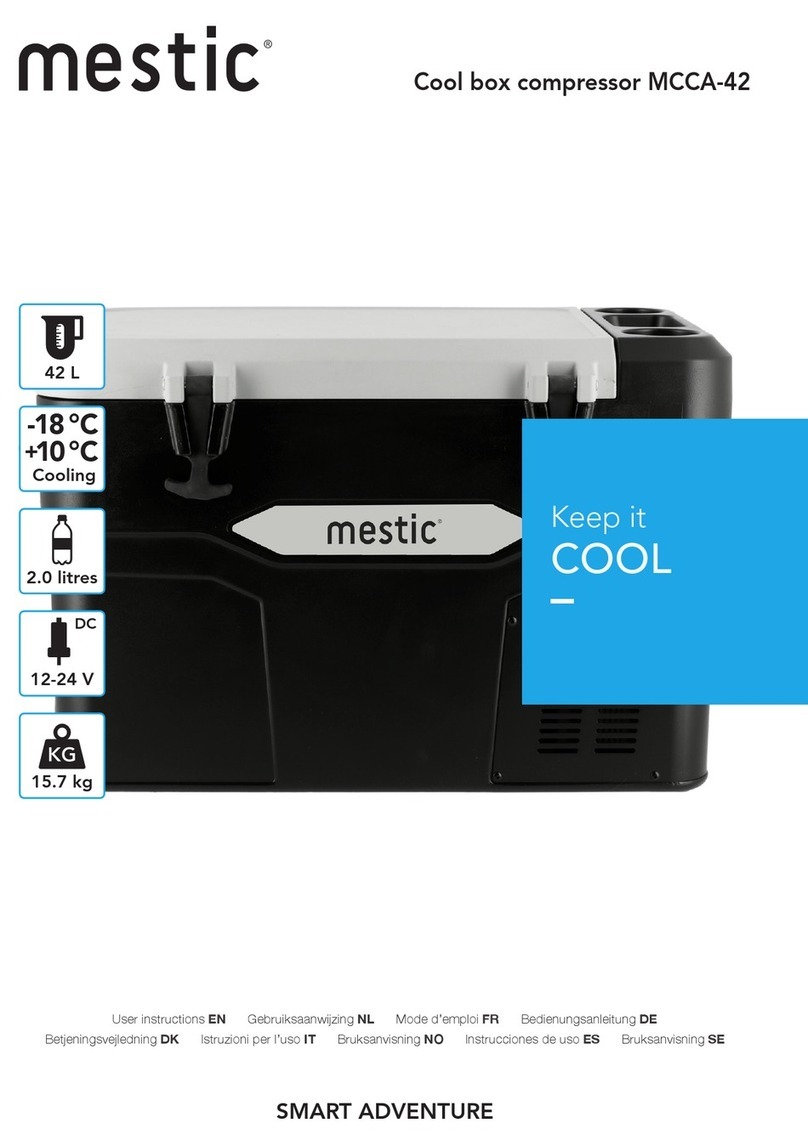Festo PWEA-AC Series User manual

Translation of the original instructions
1 Further applicable documents
All available documents for the product èwww.festo.com/pk.
2 Safety
2.1 General safety instructions
– Only use the product in its original condition without unauthorised modifica
tions.
– Only use the product if it is in perfect technical condition.
– Observe product labelling.
– Take into consideration the ambient conditions at the location of use.
– Before working on the product, switch off the power supply and secure it
against being switched back on. Only switch on the power supply when the
product has been assembled and installation work is complete.
– Comply with the handling specifications for electrostatically sensitive devices.
– Observe tightening torques. Unless otherwise specified, the tolerance is
±20%.
2.2 Intended use
1Feed pipe
2Sensor
3Pilot valve
4Diaphragm
5Drain pipe
6Housing
Fig. 1 Function
The intended purpose of the PWEAAC/AP condensate drain is to discharge con
densate from compressed air systems. The condensate flows through the feed
pipes 1to the PWEAAC/AP and collects in the housing 6. A capacitive sensor
2continuously monitors the fill level and sends a signal to the electronic control
ler when the reservoir is full. The pilot valve 3is actuated and the diaphragm
4opens the drain pipe to discharge the condensate 5. If the PWEAAC/AP is
emptied, the drain pipe is closed before a loss in pressure can occur. The device is
not intended to be used with fluids and gases.
2.3 Training of qualified personnel
– Installation, commissioning, service and disassembly should only be conduc
ted by skilled personnel.
– The skilled personnel must be familiar with the installation of electrical and
pneumatic control systems.
2.4 Approvals
The product fulfils the requirements of EU directives and comes with the CE mark
ing .
The productrelevant EU directives and standards are listed in the declaration of
conformity èwww.festo.com/sp.
2.5 Further information
– Accessories èwww.festo.com/catalogue.
– Spare parts èwww.festo.com/spareparts.
– Documents and literature èwww.festo.com/sp.
3 Product overview
Fig. 2 Condensate drain PWEAAP3D
Fig. 3 Condensate drain PWEAAC
3.1 Product design
1Sensor board
2Front hood
3Screws
4Cable connector
5Terminal KL 4
6Terminal KL 2
7Cable connector
8Cable connector
9Cable
10 Cable
11 Screw
12 Power supply housing
13 Terminal KL 1
14 Terminal KL 5
15 Power supply board
Fig. 4 Product design
4 Installation
4.1 Pneumatic installation
Observe the pressure differences.
• Each condensate accumulation point must be drained separately.
8093862
PWEA-AC/-AP
Condensate drain
8093862
201806a
[8093864]
Instructions| Operating
Festo AG & Co. KG
Ruiter Straße 82
73734 Esslingen
Germany
+49 711 3470
www.festo.com

Fig. 5 Draining
1Drain pipe
2Collecting pipe
3Max. 5 m inclination for drain pipe
4Pneumatic tube, adjustment
5Connecting thread, SW 27
Fig. 6 Pneumatic installation
1. Adjusting the pneumatic tube 4.
2. Mount the condensate drain PWEAAC/AP to the connection thread of the
condensate feed 5. èThe minimum pressure required in the drain pipe
increases with every metre of inclination by 0.1 bar. Max. inclination of drain
pipe is 5 m 3.
3. Lay the collecting pipe with a minimum gradient of 1% 2.
4. The drain pipe 1must feed from the top into the collecting pipe.
4.2 Electrical installation
• Read and comply with the permissible mains voltage on the type plate!
• Carry out all installation work in accordance with VDE 0100.
• Observe the pin allocation.
• Do not install when powered.
Condensate drain PWEA-AC/-AP-3D
1. Loosen the screws 3and remove the front hood 2.
2. Remove the cable connector 4from the sensor board 1.
3. Loosen the screws aAon the power supply housing aB.
4. Remove the power supply board aE.
5. Remove the cable connectors 7and 8 and feed through cable 9and aJ.
6. Connect cable aJto terminals KL 1 and KL 4 and cable 9to terminals KL 2
and KL 5.
7. Install the power supply board aEin the power supply housing aB. Tighten
the cable and fasten with cable connectors 7and 8. Make sure the cable
connector 4leads upwards.
8. Plug the cable connector 4into the sensor board 1.
9. Replace the front hood 2 and tighten screws 3.
10. Tighten the screws aAon the power supply housing aB.
PWEA-AP-3D Plug connector ST1 (M12, 5-pin)1)
1 +24VDC +24
2 External test IN1
3 0V 0V
4 Alarm signal,
changeover contact
5 Alarm signal, N/C con
tact
1) e.g. with connecting cable type SIMM125GD...
Tab. 1 Description of plug connector ST1 (M12, 5polig)
There is no galvanic isolation between the contacts of the plug connector ST1.1–3
and the condensate area.
• Do not connect +24 VDC to ground.
Potential-free fault message contact
ST1.4–5 N.O.–COM Contact closed during normal operation.
Tab. 2
External test ST1.2–3 0V–IN1
Connect contacts Test active = drain
Contacts open Test inactive
Tab. 3
Device Cable Pin Contact Designation
2 Protective
earth conduct
or
PE
3 Neutral con
ductor
N
KL1
4 External con
ductor
L
1 N/O contact
2 Converter
KL2
3 N/C contact
1 0V 0V
PWEAAC6A
PWEAAC7A
KL5
2 External test IN1
Tab. 4
Device Cable Pin Contact Designation
1 N/O contact
2 Converter
KL2
3 N/C contact
1 +24 VDC +24
2 0V 0V
3 – 0T1
4 External test IN1
5 +24 VDC (0 V) ±24
PWEAAC3D
KL4
6 0 V (+24 VDC) ±24
Tab. 5
• When connecting several PWEAAC/AP units to a single 24 VDC source:
ensure the same polarity for the terminals KL4.5 and KL4.6.
There is no galvanic isolation between the terminals KL4.1…6 and the condens
ate area.
• At 24 VDC operation: do not connect + (plus) 24 VDC to ground as, inside the
device, the potential of the housing is negative.
Potential-free fault message contact
KL2.1–2 N.O.–COM Contact closed during normal operation
KL2.3–2 N.C.–COM Contact closed during malfunction or power fail
ure (standbycurrent principle)
Tab. 6
External test KL5.1–2 or KL4.2-4 0V–IN1:
Connect contacts Test active = drain
Contacts open Test inactive
Tab. 7
5 Commissioning
The condensate drain PWEAAC/AP can only be operated when powered
è 8.2 Technical data, electrical.3 LEDs indicate the different operating statuses:

Operating status LEDs Function
Ready for operation Voltage is present
Drain sequence Feed pipe is open
Malfunction/alarm
If there is a malfunction in the condensate drain,
the valve opens in cycles (approx. every 3 s) so
that the malfunction can be automatically
remedied.
Test of valve function (manual draining):
Actuate the pushbutton for approx. 2 s. Test of
alarm function è Alarm mode function: Actuate
the pushbutton for at least 1 minute.
Tab. 8 Operating status LEDs
Do not use the test pushbutton for continuous draining.
Alarm mode function
The PWEAAC/AP condensate drain also has an alarm mode function for malfunc
tions when draining the condensate. If the sensor is not free after 1 minute, a fault
message is triggered.
– An alarm LED flashes.
– An alarm relay switches. The signal can be transmitted potentialfree.
– The valve opens every 4 minutes for 7.5 s.
Fig. 7
If the malfunction is remedied, the PWEAAC/AP condensate drain automatically
switches back to normal mode.
Potential-free fault message contact
The alarm signal can be forwarded via the potentialfree contact (e.g. to a control
station). The switching contact can, for example, be operated in failsafe mode.
– The PWEAAC/AP condensate drain works faultfree when powered èThe
alarm relay is activated.
– If there is no operating voltage or if there is a fault message, the alarm relay
switches off èThe working contact is open (alarm).
External test
Any existing condensate can be drained via remote control. The normal test push
button function also leads out of the PWEAAC/AD condensate drain here. If the
external contact is closed, the valve opens. The connection can be connected to a
switch, a relay contact or an open collector output.
6 Service
6.1 Cleaning and maintenance
• Clean the PWEAAC/AP condensate drain, if required, with a soft cloth. Clean
ing agents include all nonabrasive media.
7 Malfunctions
Malfunction Possible cause Remedy
Check compressor.Blocked drain pipe
Clean supply line.
Minimum pressure not reached
Error in the installation. Perform installation in accord
ance with the instruction manu
al.
OverloadCondensate is too high
Extremely large quantities of
dirt particles
Observe maximum permissible
operating pressure
è 8.1 Technical data,
pneumatic.
Tab. 9
8 Technical data
8.1 Technical data, pneumatic
Operating conditions
Permissible temperature
range
[°C] +1…+60
Operating medium Compressed air
Operating pressure [bar] 0.8…16
Mounting position Standing upright ±5°
Condensate feed G½ inside
Condensate drain (tubing) G¼ @ 8…9 mm angle nozzle
e.g. type PUNH12x2NT
Weight (empty) [kg] 0.7
Materials
Housing Polymer
Condensate reservoir Al
Seals NBR, FPM, PU
Tab. 10
8.2 Technical data, electrical
Electrical data PWEA-
AC/-AP
6A 7A 3D
Maximum power consump
tion
P < 2.0 VA P < 2.0 W
Mains voltage UAC =
115 V ±10 %
50…60Hz
UAC =
230 V ±10 %
50…60Hz
U0 =
24 VDC
+10…25 %1)
Recommended cable sheath [@] 5.8…8.5 mm
Cable cross section [mm2] 3x0.75, 5x0.25
Fuse protection 0.5 A2) 100 mA1)2)
Contact load / potentialfree
fault message
0 V…250 V
0 mA…1000 mA
5 V…30 V
10 mA…1000
mA
External test IN1 and 0V
Test active:
Test inactive:
IN1: 0…1 V contact closed
IN1: 5…36 V contact open
1) Minimum voltage source internal resistance Ri 12 Ohm
2) medium timelag
Tab. 11
This manual suits for next models
7
Other Festo Air Compressor manuals
Popular Air Compressor manuals by other brands
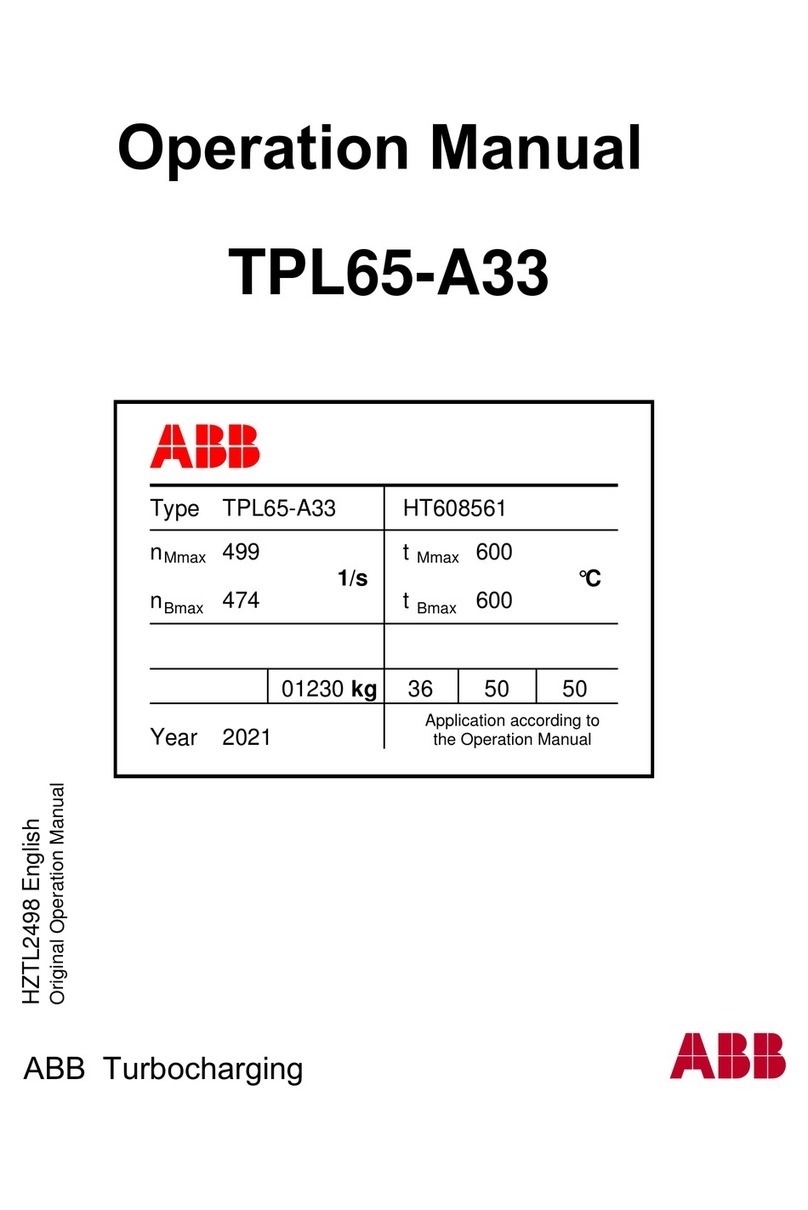
ABB
ABB TPL65-A33 Operation manual
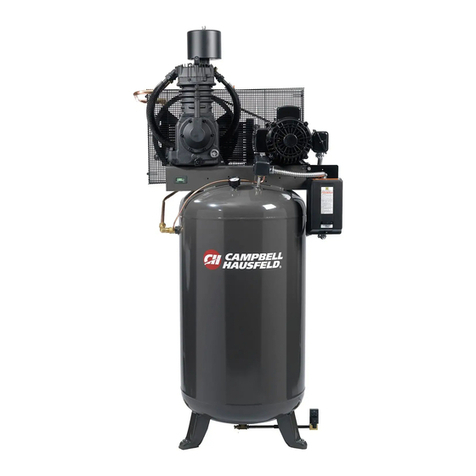
Campbell Hausfeld
Campbell Hausfeld TF2101 operating instructions
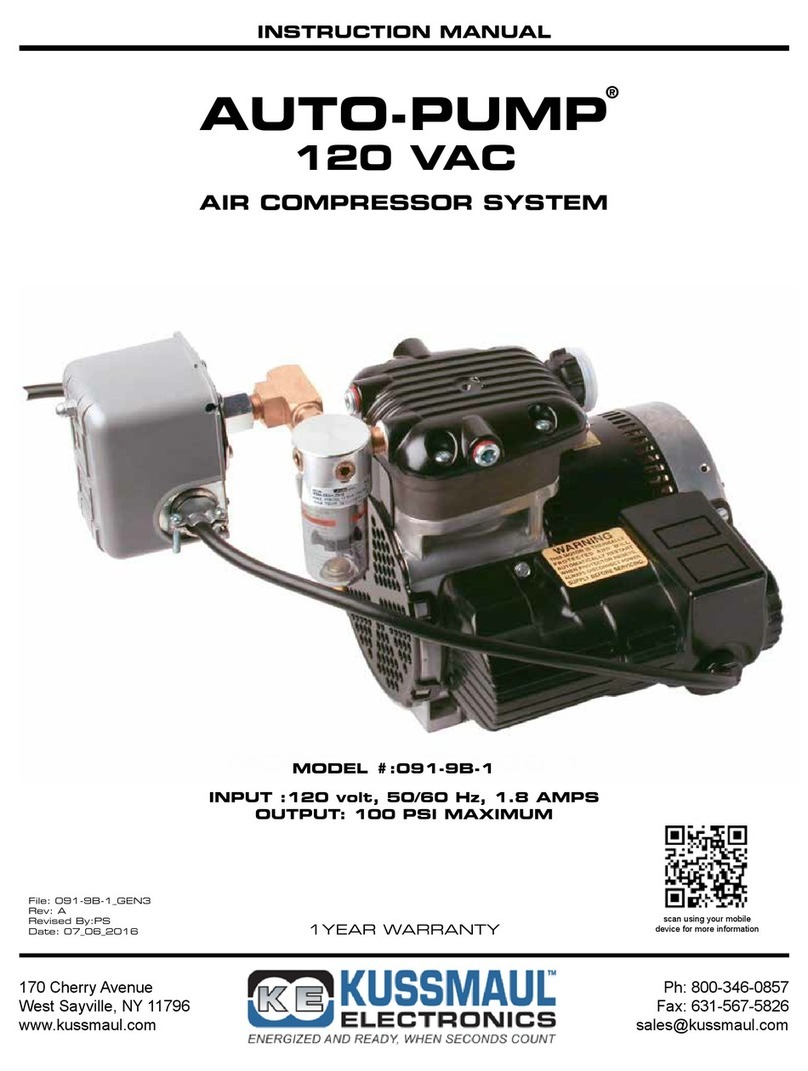
KUSSMAUL
KUSSMAUL AUTO-PUMP instruction manual
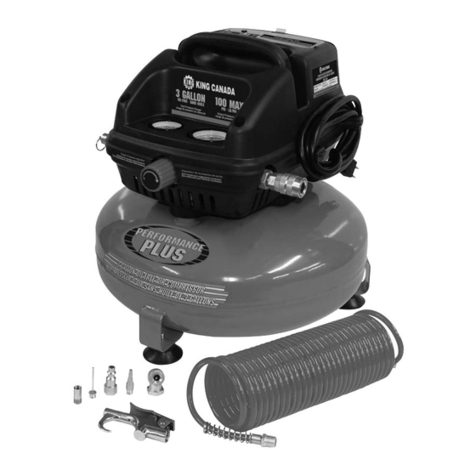
King Canada
King Canada 8438 instruction manual

EINHELL
EINHELL TC-AC 190/8 OF Set Original operating instructions
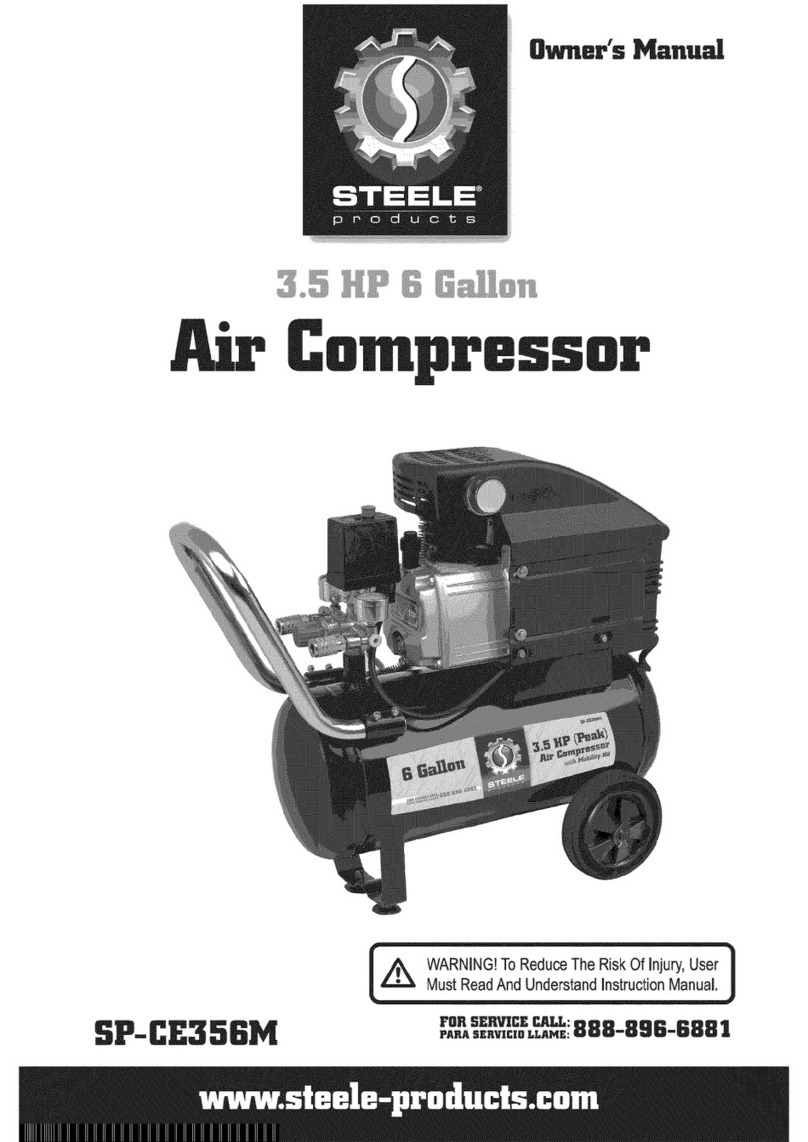
STEELE PRODUCTS
STEELE PRODUCTS SP-CE356M owner's manual

